#boterismo
Text
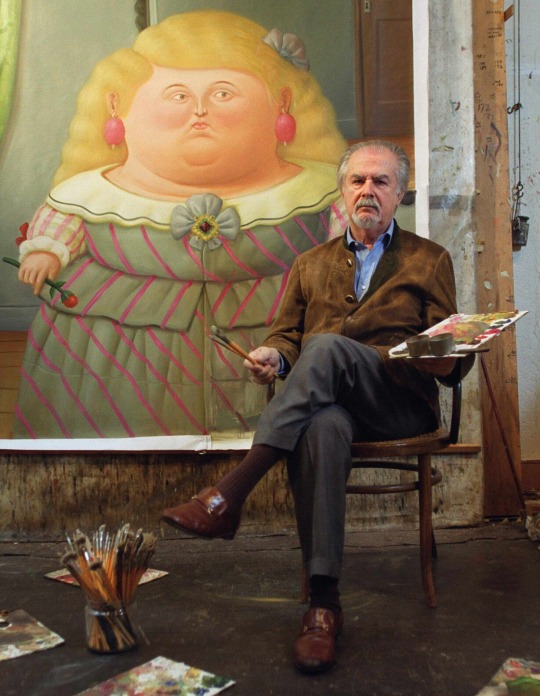
Fernando Botero, the Colombian 🇨🇴 artist renowned for his magical-realist depictions of voluptuous figures, is dead at 91. He portrayed middle-class life and bordellos, clerics, generals, bishops, prostitutes, housewives, peasants and the effects of violence made him one of the world’s best-known artists.
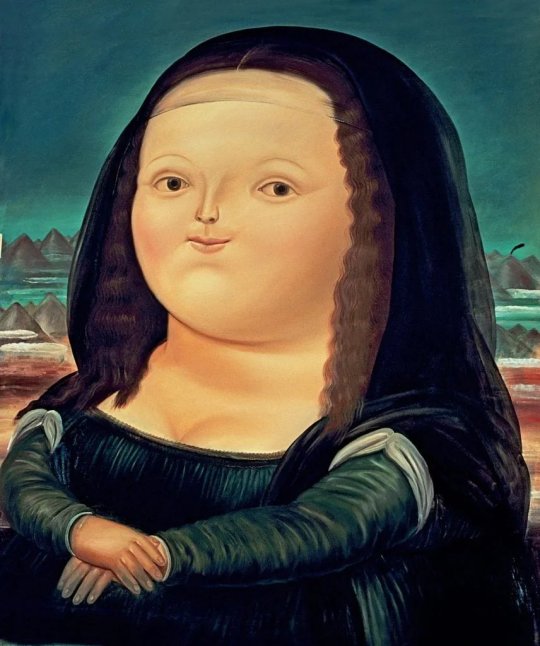


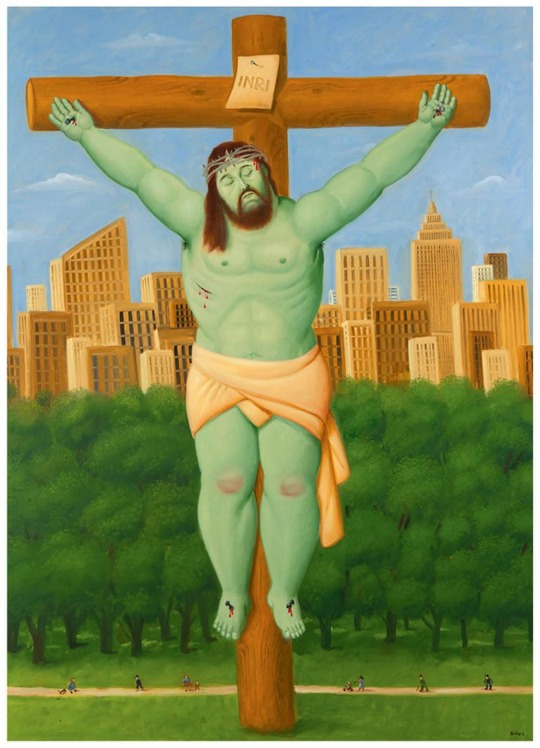
His signature style, also known as "Boterismo",depicts people in large, sensuous, exaggerated volume, which can represent political criticism or humor, depending on the piece.🎨🖌️


Botero's sculptures exhibited in cities around the world:

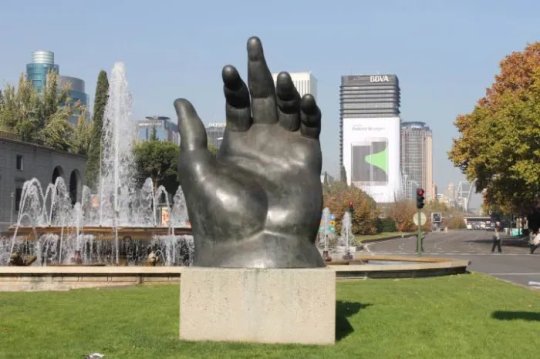

He said : “I often think about death, and it saddens me to leave this world and not be able to paint more. I love it so much.”
Thank you teacher Fernando Botero Angulo for giving us a different and irreverent view of art. Rest well there in infinity..
#Fernando Botero#artist#rip#amazing#art#color#boterismo#illustration#water color#paint#art gallery#abstract#vintage#art work#colombia#botero#photography#awesome#latin#sculpture#sculptor#muralist#aesthetic#painting#pintor#artista#style#photo#arte#work
583 notes
·
View notes
Text

Fernando Botero (Columbian, 1932-2023) • Sunflowers • 1967
#still life#fernando botero#art#painting#fine art#art of the still life blog#flower still life#columbian painter#naïve art#boterismo#hispanic heritage month
19 notes
·
View notes
Text
boterism🥚




4 notes
·
View notes
Text
for those who don't know yet:
✨botero mona lisa✨
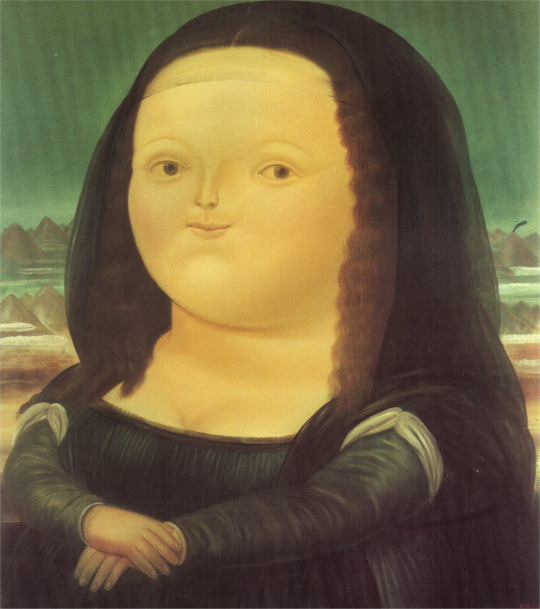
7 notes
·
View notes
Text

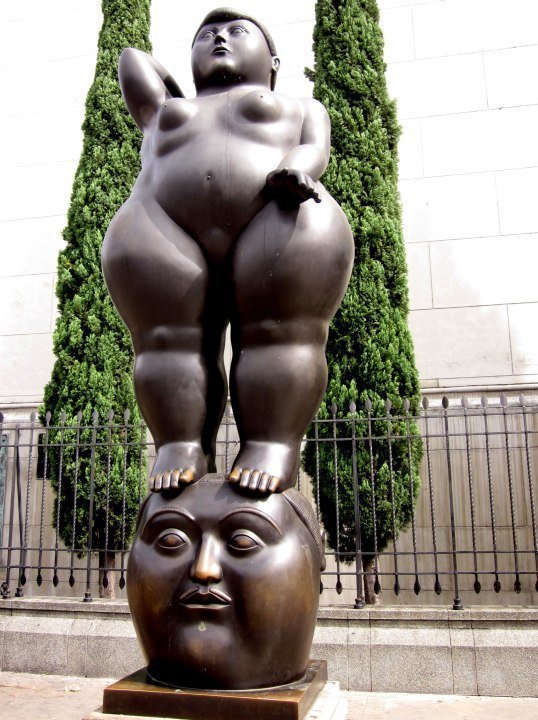
Sexypink -Botero is an Artist whose work I have enjoyed for decades. I used to think that his sculptures came from the age of Futurism when I was a teenager. I was surprised when I realized that he was very much still working. Rest in peace Fernando Botero. The joie de vivre he brought to his corpulent people was way ahead of the body positive movements today. Thank you.
added note: Botero did not only produce plump people, he expanded the nature of cats, objects and food as well.
#sexypink/Fernando Botero#sexypink/sculpture#sexypink/Colombian Painter and Sculptor has died#sexypink/bereavement#Latin American Artists#whimsical#rotund forms#Boterismo
3 notes
·
View notes
Text




Boterismo
0 notes
Text




1 note
·
View note
Text
The Life & Death of Medellín’s Renowned Maestro – Fernando Botero
Discover the life and art of Medellín's legendary maestro, Fernando Botero. Celebrate his legacy and explore the Museo de Antioquia.
0 notes
Photo

#Repost @mara_ernst19 Fernando Botero (1952). Portrait of a young Indian. #art #painter #colombianartist #colombianart #colombia #contemporaryartist #contemporaryart #figurativeart #naiveart #boterismo #portrait #youngindian #pinkbackground #light #nicecolours #atmosphere #seaview #artlovers #dailyart #artoninstagram #instaart #artcollection #virtualart #artgallery #fernandobotero https://www.instagram.com/p/Cgz11VqLbfH/?igshid=NGJjMDIxMWI=
#repost#art#painter#colombianartist#colombianart#colombia#contemporaryartist#contemporaryart#figurativeart#naiveart#boterismo#portrait#youngindian#pinkbackground#light#nicecolours#atmosphere#seaview#artlovers#dailyart#artoninstagram#instaart#artcollection#virtualart#artgallery#fernandobotero
0 notes
Text
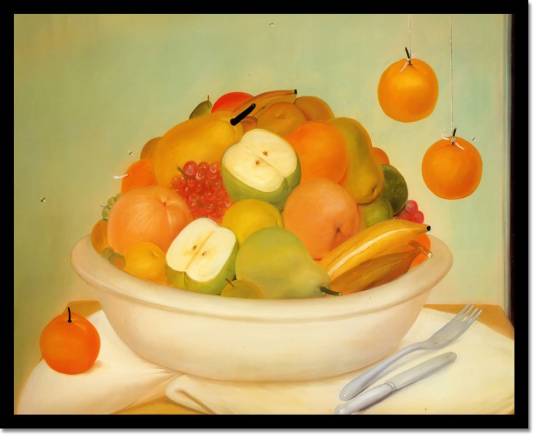
Fernando Botero (Columbian, 1932-2023) Still Life with Fruits
#still life#fruit still life#fernando botero#painting#fine art#art#art of the still life blog#columbian painter#still life fruit#hispanic heritage month#naïve art#boterismo
17 notes
·
View notes
Text


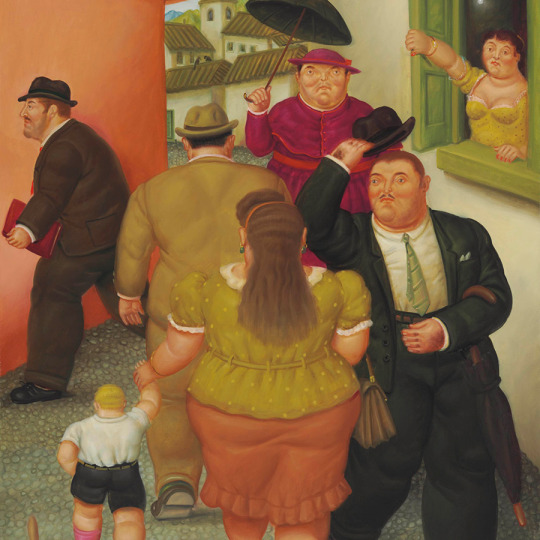



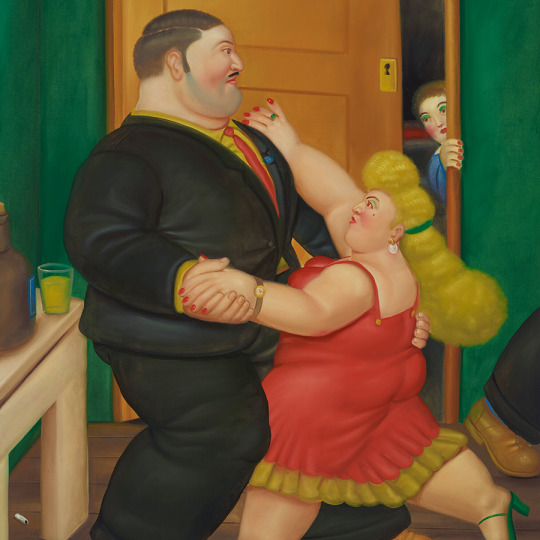


Artist I Like Series
Fernando Botero 1932 - 2023 a Colombian figurative artist and sculptor. His signature style, also known as "Boterismo", depicts people and figures in large, exaggerated volume, which can represent political criticism or humor, depending on the piece. He was considered the most recognized and quoted artist from Latin America in his lifetime. He recently died at age 91 this September.
#fernando botero#20th century#21st century#Male Artist#Colombian#sculptor#painter#contemporary art#artist I like#art history#art#fave
57 notes
·
View notes
Text
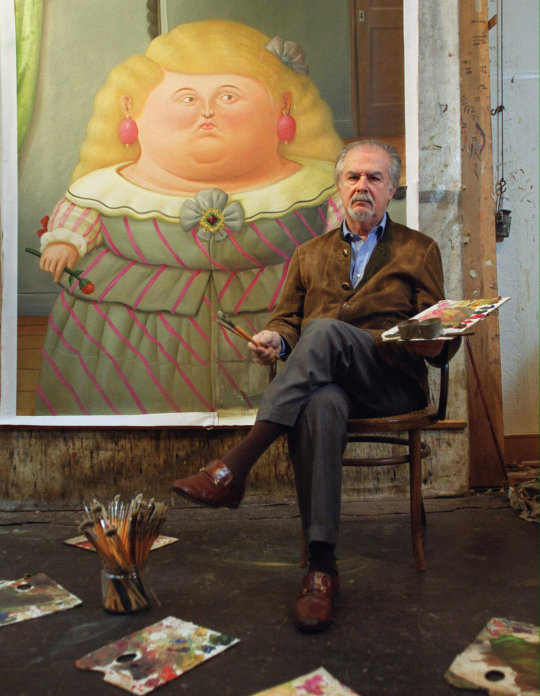
The rotund, colourful men and women painted and sculpted by Fernando Botero, who has died aged 91, made him perhaps the most popular Latin American artist of his generation and also one of the most commercially successful.
For years, art critics looked down on what the Colombian himself called his “fat people���, dismissing them as a trademark gimmick. But museums and collectors (including Hollywood celebrities such as Jack Nicholson and Sylvester Stallone) snapped them up. His paintings and sculptures were so immediately identifiable for their bloated proportions that his work even gave rise to the term “Boterismo” to describe his aesthetic.
Botero argued that every true artist has to “deform reality” according to their way of seeing the world. He stressed that, despite the apparent ease with which he produced his prolific output, each work was the result of intense artistic imagination and effort.
Born in Colombia’s second city, Medellín, Fernando was the son of David Botero, a travelling salesman, who died when he was four, and Flora Angulo, who provided for her three children by working as a seamstress. Botero often said that the dedication she put into fabricating her creations was his earliest inspiration, and one of his later works was an affectionate portrait of her at her sewing machine.
An uncle helped pay for his education at a Jesuit school, but from an early age Botero took to drawing and painting to supplement his mother’s earnings. In his teens he drew illustrations for the cultural supplement of a Medellín newspaper, and soon afterwards he left for the capital, Bogotá, where one of his first oil paintings won him a large sum in prize money, allowing him to pursue his artistic education in Europe.
At first his work was greatly influenced by the school of Mexican muralists that included Diego Rivera and José Clemente Orozco. As well as giving him an appetite for large public works and teaching him how to deal with volume in two dimensions, what he took from the artists was the fact that they considered depicting the life of Mexican peasants and the history of Latin America as being equally important as anything being produced in Europe or the US. In this, Botero’s confidence and self-awareness mirrored that of writers such as Gabriel García Márquez, whose novel One Hundred Years of Solitude also gave themes of Colombia’s history a universal appeal.
In Europe in the early 1950s, Botero lived first in Madrid, then Paris, but perhaps the most formative period of his early career came in Florence, where he spent two years studying the Italian masters, especially those of the quattrocento such as Masaccio, Paolo Uccello and Piero della Francesca. He never tired of repeating that the most enduring lesson he learned from them was that, although their works appear realistic, they were imagined and processed by an individual sensibility.
By the early 60s Botero was living in New York, and already acquiring a considerable reputation. In 1961 his reworking of the Mona Lisa, entitled Mona Lisa, Age Twelve, in his typically rotund style, was purchased by the Museum of Modern Art – the first of many acquisitions of his work by that institution.
In the 70s his preoccupation with capturing volume led him to start producing huge bronze sculptures of voluptuous women and sadly comical men, as well as giant cats and massive hands. These were often displayed in the city centres of Madrid or Paris. In the latter, a 1993 exhibition on the Champs-Ēlysées drew such large crowds that traffic ground to a halt. Botero’s reclining Broadgate Venus (1989) is on permanent display near Liverpool Street station in London.
Although internationally renowned, Botero never forgot his roots in Colombia. In 2000 he donated more than 100 of his works to a specially created Botero Museum in Bogotá, adding paintings from his personal collection by Marc Chagall, Pablo Picasso and the impressionists. He gave another 100 of his works to the Museum of Antioquia in Medellín, as well as 23 of his monumental bronze sculptures.
It was what happened to one of these sculptures – his Dove of Peace in the Plaza de San Antonio, Medellín – that brought into sharp relief the contrast between his generally exuberant, cheerful view of life and the often harsher reality of Colombia. During an open air concert in the square in 1995, a bomb hidden beneath the sculpture by Farc guerrillas killed 30 people and injured more than 200. One of the artist’s sons, Fernando Botero Zea, was defence minister at the time, and the bomb was apparently intended as a protest by Farc against his refusal to enter peace talks with them. Botero’s response was to cast another, identical bird, and have it placed alongside the mutilated original with the names of the victims inscribed on its base.
He was, however, capable of addressing the crueller aspects of life, and did so in several paintings. In the 60s and 70s he produced a series of portraits of Latin American dictators in which the puffed-up size of the figures was a satirical reflection on their self-importance. Nor could he remain indifferent to the drug violence that made his home city at one time named the most dangerous in the world, especially when the drug kingpin Pablo Escobar dominated the trade. In 2004 Botero produced a series of paintings of him being hunted down and killed in 1993, as well as other scenes from the violence that gripped Colombia in the 90s.
The most controversial of his more political works was the series he produced in 2004-05 of around 80 paintings and 100 drawings depicting the torture by US forces of prisoners in the Abu Ghraib jail in Iraq. Botero donated the series to the library at the University of California, Berkeley, arguing that the subject matter was too serious for them to be sold to collectors.
Sales of his other work allowed him to enjoy a luxurious lifestyle, with houses in Europe and the US, a yacht and what he called his “favourite toy”, a Rolls-Royce Phantom V. Across the years his work was shown in around 200 individual exhibitions, more than 100 of them in well-known museums and public art galleries. He continued to work 10 hours a day throughout his 80s, and declared to friends that he wanted to die painting, as Picasso did.
Botero’s first marriage, to Gloria Zea, ended in divorce in 1960, and his second wife, the Greek sculptor Sophia Vari, whom he married in the mid-70s, died in May. He is survived by three children, Fernando, Lina and Juan Carlos, from his first marriage. Another child, Pedro, from a relationship in the early 70s with Cecilia Zambrano, was killed in 1979 in a car accident in which Botero was also injured.
🔔 Fernando Botero Angulo, painter and sculptor, born 19 April 1932; died 15 September 2023
Daily inspiration. Discover more photos at Just for Books…?
20 notes
·
View notes
Photo
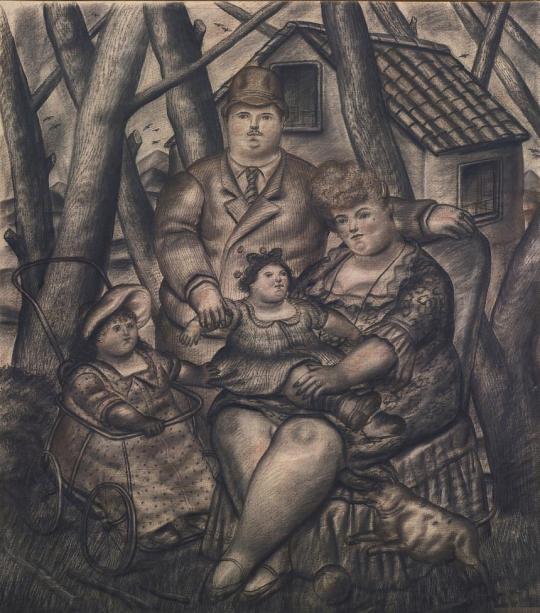
MWW Artwork of the Day (4/23/23)
Fernando Botero (Colombian, b. 1932)
The Family (1974)
Charcoal & pastel on canvas, 198.7 x 175.3 cm.
Private Collection
Fernando Botero Angulo is a Colombian figurative artist and sculptor, born in Medellín. His signature style, also known as "Boterismo", depicts people and figures in large, exaggerated volume, which can represent political criticism or humor, depending on the piece. He is considered the most recognized and quoted living artist from Latin America, and his art can be found in highly visible places around the world, such as Park Avenue in New York City and the Champs-Élysées in Paris.
For more of this artist's work, see this MWW gallery/album:
https://www.facebook.com/media/set/?vanity=TheMuseumWithoutWalls&set=a.3335443876560958
6 notes
·
View notes
Text
Blog #6: Examinando El Arte de Fernando Botero 🖌️🎨
En esta pintura por Fernando Botero veo una pareja chonchita bailando el Tango. Se ven alegres, bailando a ritmo rapido. El artísta uso colores muy vividos como en el vestido de la señora y en las cortinas. Los colores son muy cálidos, quiza symbolice el amor y pasión del baile y ambiente. Los dos estan vestidos elegantemente también. Veo cigarillos y una botella de alcohol en el piso. Fernando es un artísta colombiano que siempre pinta a gente gorda. El nació en Medellín el 19 de abril de 1932. Le gustaba dibujar con volumen los animales y las personas, esto fue algo que lo destacaba de los demás. Tiene su propio nombre su estilo. Lo llaman el "boterismo." Cuando completo sus estudios, se fue a vivir a Bogota. Tuvó su primer exposición en la galería de Leo Matiz. Con el tiempo, se hizo más famoso. Él decía que usaba su cultura de Colombia para inspiración de sus pinturas también. Recientemiente en el 15 de septiembre de 2023, se murio a los 91 años. Pero, seguira viviendo por su arte y contribuciónes al mundo del arte. Lo más difícil de este proyecto era encontrar cual pintura quería escojer para hacer mi blog de. Tiene muchas pinturas creativas Fernando Botero. Me gusto hacer este proyecto porque me interesa el arte y pude aprender de otro artísta famoso latino.

Los enlaces con la información que leí: https://historia-arte.com/artistas/fernando-botero
https://cnnespanol.cnn.com/2023/09/15/fernando-botero-gran-pintor-colombiano-inconfundibles-figuras-voluptuosas-orix/
0 notes
Text
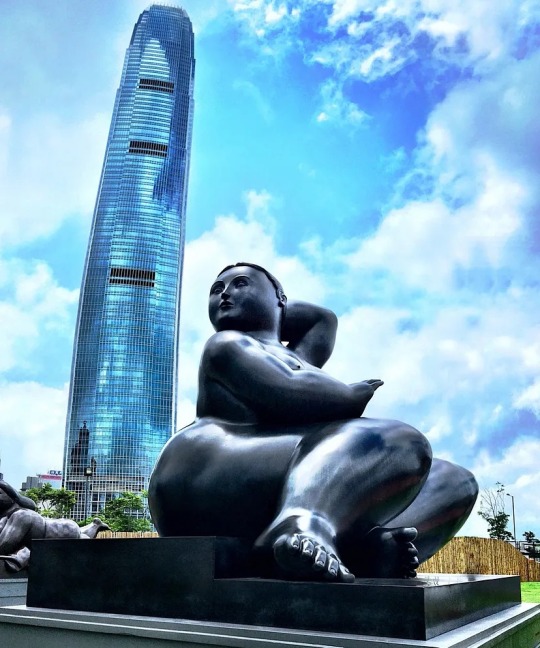
In here you can appreciate One of Boteros art.
Exploring Botero's art is like stepping into different art worlds, and that's something I really like. He has this cool way of drawing, and making art called "Boterismo," where everything looks big and funny or serious. It's like he's using a secret code to create his own unique style. I enjoy looking at art from different perspectives, and Botero's way of making his subjects exaggerated gives me a fresh way to see things.
What's even cooler is that Fernando Botero is from Colombia, and his art represents our country. It makes me proud to know that he brought a piece of Colombia to the art world. His unique style, "Boterismo," is like a special signature that tells everyone, "Hey, this is from Colombia!" It's awesome how he made a mark on the art scene, showing that our country has its own cool and creative way of doing things.
0 notes
Link
0 notes